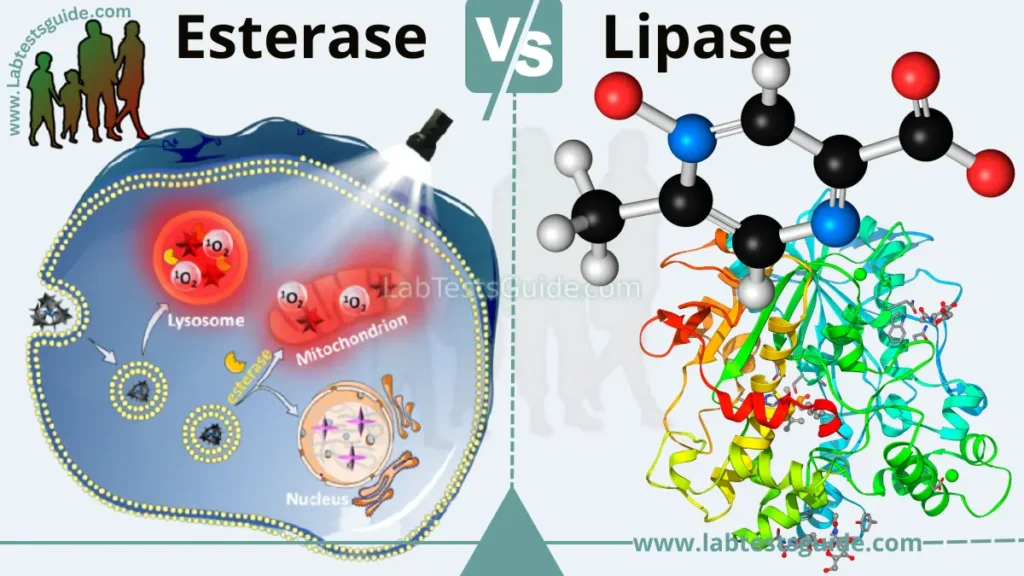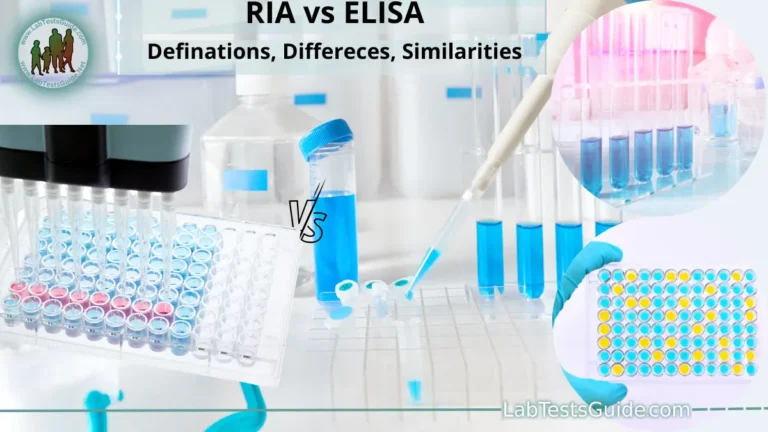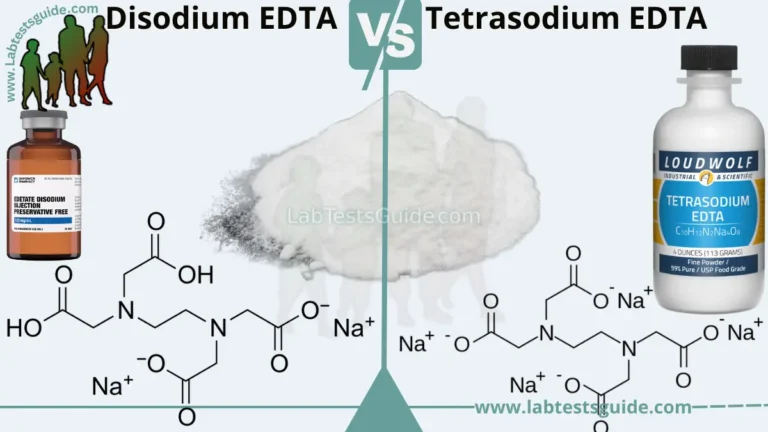Esterase and lipase both have the ability to break down ester bonds, they have distinct differences in terms of their specificity and substrate range. Esterases are a broad class of enzymes that can break down various types of ester bonds, while lipases are a specific type of esterase that are primarily involved in the breakdown of triglycerides. Understanding the differences between these two enzymes is important for understanding their roles in various biological processes, including digestion, metabolism, and detoxification.

Definations:
Defination of Esterase :
Esterase is a type of enzyme that catalyzes the hydrolysis of ester bonds, resulting in the breakdown of esters into their component parts, which are usually an alcohol and a carboxylic acid or phosphate. Esterases are widely distributed in nature and play important roles in various biological processes, including digestion, metabolism, and detoxification of xenobiotics. They have a broad substrate specificity and can hydrolyze a wide range of ester bonds.
Defination of Lipase :
Lipase is a type of enzyme that catalyzes the hydrolysis of triglycerides, which are the main components of dietary fats, into their component parts, which are usually fatty acids and glycerol. Lipases are primarily produced by the pancreas and are involved in the digestion and absorption of fats in the small intestine. They are also found in other tissues, including adipose tissue, and play important roles in various biological processes, including energy metabolism and hormone regulation. Lipases have a high substrate specificity for triglycerides and are able to break down different types of fatty acids.
Differences Between Esterase and Lipase:
The main differences between esterase and lipase are:
- Substrate specificity: Esterases have a broad substrate specificity and can break down various types of ester bonds, including carboxylic esters and phosphoric esters. Lipases, on the other hand, have a high substrate specificity for triglycerides and can break down the ester bonds that hold together the fatty acids and glycerol molecules in dietary fats.
- Function: Esterases are involved in a wide range of biological processes, including the metabolism of drugs, detoxification of xenobiotics, and the digestion of dietary fats. Lipases are primarily involved in the digestion and absorption of fats in the small intestine, as well as energy metabolism and hormone regulation.
- Production: Esterases are produced by a variety of tissues and cells, including the liver, pancreas, and intestine. Lipases are primarily produced by the pancreas and are also found in other tissues, including adipose tissue.
- Optimal pH: Esterases have an optimal pH range of 6-8, while lipases have an optimal pH range of 7-8.
- Optimal temperature: Esterases have an optimal temperature range of 30-40°C, while lipases have an optimal temperature range of 40-50°C.
Table of Differences:
Here is a table summarizing the differences between esterase and lipase:
| Esterase | Lipase | |
|---|---|---|
| Substrate specificity | Broad substrate specificity, can break down various types of ester bonds | High substrate specificity for triglycerides |
| Function | Involved in metabolism, detoxification, and digestion of fats | Primarily involved in digestion and absorption of fats, energy metabolism, and hormone regulation |
| Production | Produced by a variety of tissues and cells, including liver, pancreas, and intestine | Primarily produced by the pancreas and found in other tissues, including adipose tissue |
| Optimal pH | Optimal pH range of 6-8 | Optimal pH range of 7-8 |
| Optimal temperature | Optimal temperature range of 30-40°C | Optimal temperature range of 40-50°C |
Similarities Between Ssterase and Lipase:
Esterase and lipase have some similarities, including:
- Both are types of enzymes that catalyze the hydrolysis of chemical bonds. Esterases hydrolyze ester bonds, while lipases hydrolyze triglyceride bonds.
- Both are involved in the breakdown of molecules that are important for various biological processes. Esterases are involved in the metabolism of drugs, detoxification of xenobiotics, and the digestion of dietary fats, while lipases are involved in the digestion and absorption of fats, energy metabolism, and hormone regulation.
- Both have optimal conditions for their activity. Esterases have an optimal pH range of 6-8, while lipases have an optimal pH range of 7-8. Esterases have an optimal temperature range of 30-40°C, while lipases have an optimal temperature range of 40-50°C.
- Both are produced by various tissues and cells in the body. Esterases are produced by the liver, pancreas, and intestine, while lipases are primarily produced by the pancreas and found in other tissues, including adipose tissue.
Despite these similarities, esterase and lipase have distinct differences in terms of their substrate specificity, function, and optimal conditions for activity.
Table of Similarities:
Here is a table summarizing the similarities between esterase and lipase:
| Esterase | Lipase | |
|---|---|---|
| Type of enzyme | Both are enzymes that catalyze the hydrolysis of chemical bonds | Both are enzymes that catalyze the hydrolysis of chemical bonds |
| Involvement in biological processes | Both are involved in the breakdown of molecules important for various biological processes | Both are involved in the breakdown of molecules important for various biological processes |
| Optimal conditions for activity | Both have optimal pH and temperature ranges for their activity | Both have optimal pH and temperature ranges for their activity |
| Production | Both are produced by various tissues and cells in the body | Both are produced by various tissues and cells in the body |
FAQs (frequently asked questions):
What is esterase?
Esterase is a type of enzyme that catalyzes the hydrolysis of ester bonds.
What is lipase?
Lipase is a type of enzyme that catalyzes the hydrolysis of triglycerides, which are the main components of dietary fats.
What is the function of esterases?
Esterases are involved in a wide range of biological processes, including the metabolism of drugs, detoxification of xenobiotics, and the digestion of dietary fats.
What is the function of lipases?
Lipases are primarily involved in the digestion and absorption of fats in the small intestine, as well as energy metabolism and hormone regulation.
What is the optimal pH range for esterase activity?
The optimal pH range for esterase activity is 6-8.
What is the optimal pH range for lipase activity?
The optimal pH range for lipase activity is 7-8.
What is the optimal temperature range for esterase activity?
The optimal temperature range for esterase activity is 30-40°C.
What is the optimal temperature range for lipase activity?
The optimal temperature range for lipase activity is 40-50°C.
What is the substrate specificity of esterases?
Esterases have a broad substrate specificity and can break down various types of ester bonds.
What is the substrate specificity of lipases?
Lipases have a high substrate specificity for triglycerides.
What tissues and cells produce esterases?
Esterases are produced by a variety of tissues and cells, including the liver, pancreas, and intestine.
What tissues and cells produce lipases?
Lipases are primarily produced by the pancreas and are also found in other tissues, including adipose tissue.
What is the importance of esterases in drug metabolism?
Esterases play an important role in drug metabolism by hydrolyzing ester bonds in many drug molecules, which can affect their pharmacokinetics and bioavailability.
What is the importance of lipases in energy metabolism?
Lipases are important in energy metabolism because they break down triglycerides into fatty acids, which can be used as a source of energy by cells.
What is the role of lipases in hormone regulation?
Lipases are involved in hormone regulation by catalyzing the breakdown of lipids in adipose tissue, which can release fatty acids into the bloodstream and affect the levels of hormones like insulin and glucagon.
Conclusion:
In conclusion, esterases and lipases are two different classes of enzymes that play important roles in biological systems. Esterases hydrolyze ester bonds, which are found in a variety of substrates including lipids, carbohydrates, and proteins, whereas lipases specifically hydrolyze triglycerides into fatty acids and glycerol.
Possible References Used







